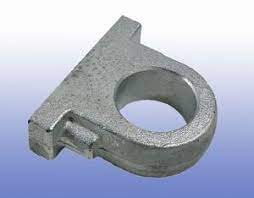Ductile iron, also known as nodular or spheroidal graphite iron, is a versatile material widely used in various industries due to its exceptional mechanical properties, cost-effectiveness, and ductility. In this comprehensive guide, we will delve into the world of ductile iron parts, covering their manufacturing processes, key properties, and diverse applications.
I. Manufacturing of Ductile Iron Parts:
-
Melting and Alloying:
- The production of ductile iron parts begins with melting iron and adding alloying elements such as magnesium and cerium to promote graphite formation.
- These alloying elements transform the traditional flake graphite in cast iron into spherical nodules, enhancing the material's ductility.
-
Casting:
- Molten ductile iron is poured into molds, typically made of sand or metal, to create the desired part.
- The choice of casting method, such as sand casting or investment casting, depends on the complexity and size of the component.
-
Cooling and Solidification:
- The castings are allowed to cool and solidify, forming a unique microstructure that combines the strength of cast iron with the ductility of steel.
-
Heat Treatment:
- Heat treatment processes, including annealing and quenching, may be applied to further optimize the mechanical properties of ductile iron parts.
-
Machining and Finishing:
- After casting, ductile iron parts may undergo machining processes to achieve precise dimensions and surface finishes.
II. Properties of Ductile Iron Parts:
-
High Strength and Toughness:
- Ductile iron parts exhibit excellent tensile strength and toughness, making them suitable for demanding applications in automotive, construction, and machinery.
-
Ductility:
- Unlike traditional cast iron, ductile iron can deform plastically before fracturing, making it highly ductile and resistant to brittleness.
-
Corrosion Resistance:
- Ductile iron parts have good corrosion resistance, making them suitable for applications in harsh environments and outdoor settings.
-
Heat Resistance:
- Ductile iron maintains its structural integrity at elevated temperatures, making it suitable for use in high-temperature environments.
III. Applications of Ductile Iron Parts:
-
Automotive Industry:
- Ductile iron parts are commonly used in engine components, suspension systems, and transmission cases due to their high strength and wear resistance.
-
Construction and Infrastructure:
- Ductile iron pipes and fittings are widely used in water and wastewater systems, providing durability and longevity.
-
Industrial Machinery:
- Many industrial machines and equipment, such as pumps, valves, and hydraulic components, rely on ductile iron parts for their robustness and reliability.
-
Agriculture:
- Farm machinery, including plows and harrows, often incorporate ductile iron components for their resilience and longevity.
-
Railroads and Transportation:
- Ductile iron parts are employed in railway track components, couplings, and brake systems due to their strength and fatigue resistance.
Conclusion:
Ductile iron parts offer a unique combination of strength, ductility, and corrosion resistance, making them essential in various industries. Understanding their manufacturing processes, properties, and applications is crucial for engineers, manufacturers, and designers seeking to leverage the advantages of ductile iron in their projects. Whether in automotive, construction, industrial machinery, or other sectors, ductile iron parts continue to play a pivotal role in shaping modern infrastructure and technology.


No comments yet